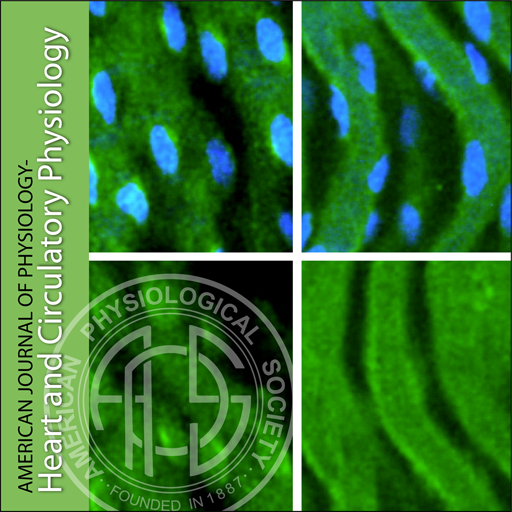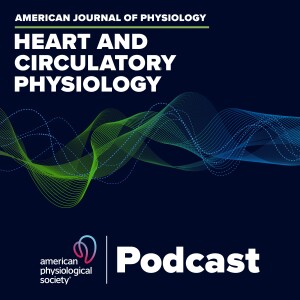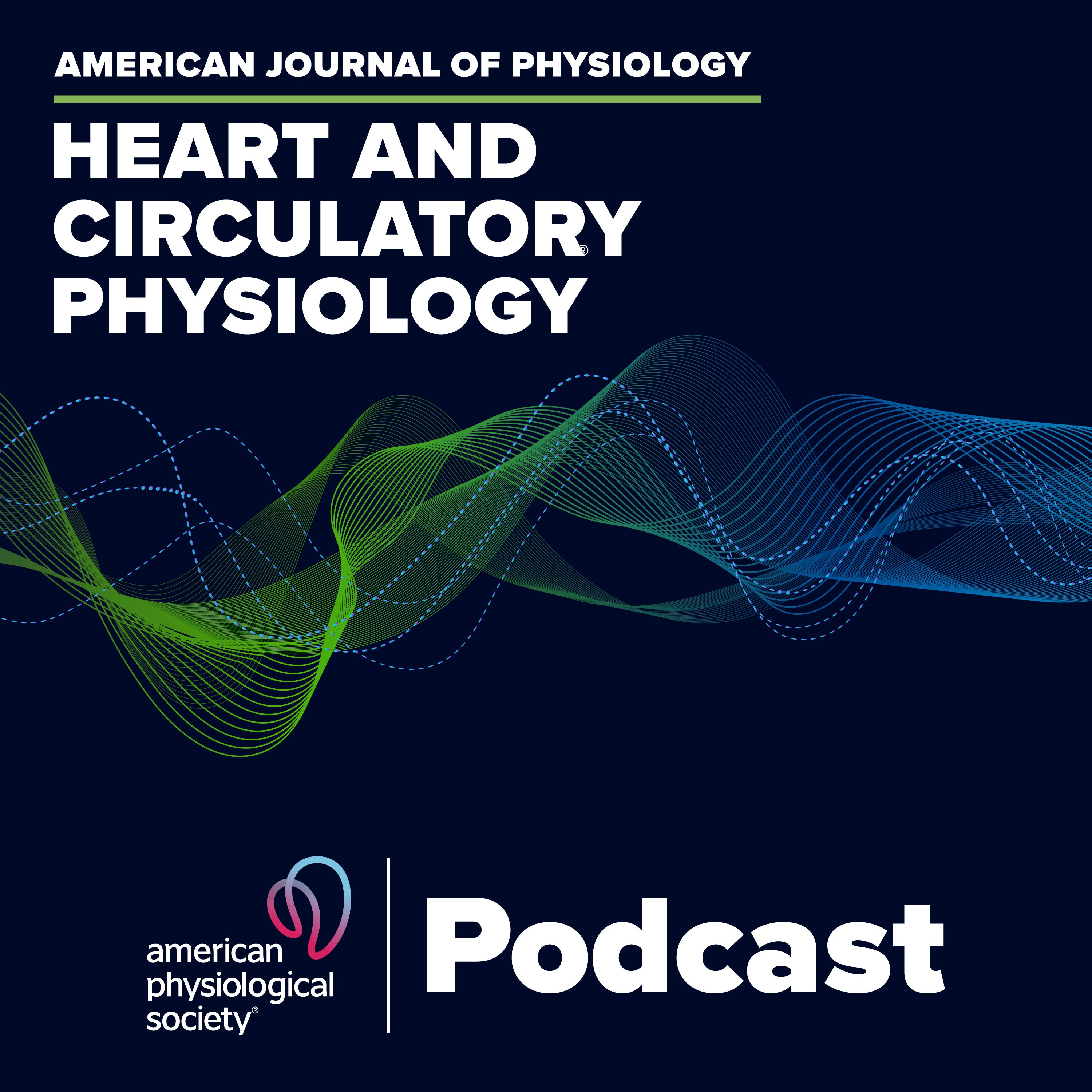Episodes

Monday May 05, 2014
Oxidative Stress and Cutaneous Local Heating in Young Smokers
Monday May 05, 2014
Monday May 05, 2014
We know smoking is bad for us, but can endothelial dysfunction in smokers be repaired, or even restored? Listen as Editor in Chief Dr. Irving H. Zucker interviews lead author Christopher Minson (University of Oregon) and expert Lacy Alexander (The Pennsylvania State University) about the work by Minson and colleagues which used the skin as a model for microvascular changes in smokers, which can indicate dysfunction earlier on in the progression of disease than macrocirculatory changes. Is nitric oxide a major player in the skin’s vasodilator response to a local cutaneous heat stressor? Listen now.
Naoto Fujii, Vienna E. Brunt, Christopher Todd Minson Tempol improves cutaneous thermal hyperemia through increasing nitric oxide bioavailability in young smokers Am J Physiol Heart Circ Physiol, published online March 28, 2014. DOI: 10.1152/ajpheart.00886.2013.

Friday Apr 25, 2014
Friday Apr 25, 2014
Why are in utero conditions so critical to cardiovascular health after birth? Listen as Associate Editor Ronglih Liao interviews lead author Loren Wold (Ohio State University) and expert Anne Knowlton (University of California, Davis) about the latest insightful work by Velten et al, which tests a “two-hit” hypothesis mouse model—inflammation followed by hyperoxia—to analyze how cardiac function is altered very early in life. Is Wold’s innovative work bringing the 18th century biologist Lamarck’s theory of inheritance of acquired characteristics front and center in 21st century cardiovascular physiology? Listen and find out.
Markus Velten, Matthew W. Gorr, Dane J. Youtz, Christina Velten, Lynette K. Rogers, Loren E Wold Adverse Perinatal Environment Contributes to Altered Cardiac Development and Function Am J Physiol Heart Circ Physiol, published online March 7, 2014. DOI: 10.1152/ajpheart.00056.2014.

Thursday Apr 24, 2014
AMPK and Peripheral Vascular Insufficiency
Thursday Apr 24, 2014
Thursday Apr 24, 2014
Is AMP kinase activation a potential therapy for patients with peripheral artery disease? Listen as Editor in Chief Irving Zucker interviews lead author Todd Kinsella (Rigel Pharmaceuticals, Inc.) and expert Michael Massett (Texas A & M University) about the interesting new work by Baltgalvis et al. In the quest to improve exercise intolerance that plagues the millions of patients suffering from peripheral artery disease, Kinsella and colleagues developed and tested a series of indirect AMPK activators for beneficial exercise adaptation in a mouse model of aging, inactivity, and obesity. Did Kinsella and colleagues find any effect of AMPK activators on the microvascular and muscle dysfunction associated with intermittent claudication? Listen and find out.
Kristen A. Baltgalvis, Kathy White, Wei Li, Mark D. Claypool, Wayne Lang, Raniel Alcantara, Baljit K. Singh, Annabelle M. Friera, John McLaughlin, Derek Hansen, Kelly McCaughey, Henry Nguyen, Ira J. Smith, Guillermo Godinez, Simon J. Shaw, Dane Goff, Rajinder Singh, Vadim Markovtsov, Tian-Qiang Sun, Yonchu Jenkins, Gerald Uy, Yingwu Li, Alison Pan, Tarikere Gururaja, David Lau, Gary Park, Yasumichi Hitoshi, Donald G. Payan, Todd M. Kinsella Exercise performance and peripheral vascular insufficiency improve with AMPK activation in high-fat diet-fed mice Am J Physiol Heart Circ Physiol, published online February 21, 2014. DOI: 10.1152/ajpheart.00839.2013.

Thursday Mar 27, 2014
Coronary Vascular Control by PDE5 and Endothelin
Thursday Mar 27, 2014
Thursday Mar 27, 2014
While vasodilators and vasoconstrictors have been studied for decades as individual components of coronary blood flow modulation, recent work by Dirk Duncker and colleagues takes a rarely-seen integrative physiological approach to elucidate the mechanisms of both systems in relationship to each other. Listen as Associate Editor Fabio Recchia (Temple University and Scuola Superiore S. Anna, Pisa) interviews lead author Dirk Duncker (Erasmus University Medical Center Rotterdam) and expert Gerd Heusch (Universitatsklinikum Essen) about the highly complex work by Zhou et al, in which studying a chronically instrumented, conscious and exercising large animal model leads to new insights into the role of PDE5 in coronary vascular control. Can we really drill down to a mechanistic level when starting with an integrative physiology whole animal model? Listen now.
Zhichao Zhou, Vincent J. de Beer, Shawn B. Bender, A. H. Jan Danser, Daphne Merkus, M. Harold Laughlin, Dirk J. Duncker Phosphodiesterase-5 activity exerts a coronary vasoconstrictor influence in awake swine that is mediated in part via an increase in endothelin production Am J Physiol Heart Circ Physiol, published online January 24, 2014. DOI: 10.1152/ajpheart.00331.2013.

Tuesday Mar 18, 2014
Tuesday Mar 18, 2014
Could the eye-opening results that a single dose of ethanol causes late-stage congenital heart defects in an avian model of Fetal Alcohol Syndrome lead to human clinical guidelines? It may be too early to tell, but the work by Karunamuni et al strives to find out. Listen as Associate Editor Leon De Windt (Maastricht University) interviews lead author Michiko Watanabe (Case Western Reserve University) and expert Wolfram Zimmermann (University Medical Center Goettingen) about this unique study which meshes cardiovascular physiology and biomedical engineering techniques, such as Doppler OCT, in an avian model of embryonic heart development correlating to the first trimester of human pregnancy. Can this open model of cardiogenesis lead to new interventional pacing techniques or rescue agents, such as folate, to restore or repair cardiac function in the embryo? Listen and learn.
Ganga Karunamuni, Shi Gu, Yong Qiu Doughman, Lindsy M. Peterson, Katherine Mai, Quinn McHale, Michael W. Jenkins, Kersti K. Linask, Andrew M. Rollins, Michiko Watanabe Ethanol exposure alters early cardiac function in the looping heart: a mechanism for congenital heart defects? Am J Physiol Heart Circ Physiol, published February 1, 2014, DOI: 10.1152/ajpheart.00600.2013.

Thursday Mar 13, 2014
MMP-2 is Localized to the Mitochondria-Associated Membrane of the Heart
Thursday Mar 13, 2014
Thursday Mar 13, 2014
Is matrix metalloproteinase MMP-2 in the mitochondria of cardiomyocytes, near the mitochondria, or both? “In order to figure out what this protease is doing, you need to know precisely where it is,” says Richard Schulz (University of Alberta), lead author of the recent study by Hughes et al. In this podcast, Associate Editor Merry Lindsey (University of Mississippi Medical Center) interviews Shulz and expert Francisco Villarreal (University of California-San Diego) about this fascinating new work bringing fresh insights into the pattern of MMP subcellular distribution. Find out what’s in the MMP inhibitor clinical trial pipeline, and get a bird’s eye view of how the MMP biology field is evolving. Listen now.
Bryan G. Hughes, Xiaohu Fan, Woo Jung Cho, Richard Schulz. MMP-2 is localized to the mitochondria-associated membrane of the heart Am J Physiol Heart Circ Physiol, published December 27, 2013, doi: 10.1152/ajpheart.00909.2013.

Wednesday Feb 12, 2014
Wednesday Feb 12, 2014
Researchers have long sought out early biomarkers of cardiac injury, and the new work by Kuster et al takes this search in an exciting new direction. Listen as Associate Editor Merry Lindsey (University of Mississippi Medical Center) interviews lead author Sakthivel Sadayappan (Loyola University Chicago) and expert Ying Ge (University of Wisconsin) about the recent discovery that cardiac muscle-specific myosin binding protein-C is an ultra-early biomarker of myocardial infarction. Will it be feasible to apply detection of myosin binging protein-C to a multi-marker regime, particularly in concert with cardiac troponins, in a clinical setting? Listen and learn.
Diederik Kuster, Adriana Cardenas-Ospina, Lawson Miller, Christoph Liebetrau, Christian Troidl, Holger M Nef, Helge Möllmann, Christian W Hamm, Karen S Pieper, Kenneth W Mahaffey, Neal S Kleiman, Bruno Daniel Stuyvers, A. J. Marian, Sakthivel Sadayappan Release kinetics of circulating cardiac myosin binding protein-C following cardiac injury Am J Physiol Heart Circ Physiol, published December 13, 2013, DOI: 10.1152/ajpheart.00846.2013.

Monday Feb 03, 2014
Sex Differences in Forearm Vasoconstrictor Response to Voluntary Apnea
Monday Feb 03, 2014
Monday Feb 03, 2014
Is there a difference in how men and women respond to apnea? Yes, according to the recent work by Patel et al published as part of a special call for papers on “Sex and Gender Differences in Cardiovascular Physiology” in AJP-Heart and Circ. Listen as Guest Editor Virginia Miller leads an engaging conversation with lead author Matthew Muller (Penn State Hershey Heart and Vascular Institute) and expert Nina Stachenfeld (The John B. Pierce Laboratory) about the sex differences noted between young men and young women in response to a sympathetic stressor, as well as the roles of aging and reproductive hormones in the noted sex differences.
Hardikkumar M. Patel , Matthew J. Heffernan , Amanda J. Ross, Matthew D. Muller Sex differences in forearm vasoconstrictor response to voluntary apnea Am J Physiol Heart Circ Physiol, published December 6, 2013, doi: 10.1152/ajpheart.00746.2013.

Wednesday Nov 20, 2013
Smoking and Sympathetic Nerve Activity in Women
Wednesday Nov 20, 2013
Wednesday Nov 20, 2013
Does increased sympathetic nerve activity put women smokers at greater risk for heart attacks? Yes, according to a new study by Middlekauff and colleagues published recently in AJP-Heart and Circ. In this podcast Associate Editor Irving Zucker interviews senior author Holly Middlekauff (University of California-Los Angeles) and leading expert Vaughan Macefield (University of Western Sydney) about this insightful work which explores how baroreflex control of sympathetic nerve activity is impaired in women smokers. Listen as we explore how normal sympathetic nerve activity fluctuations associated with menstrual cycle hormonal changes in premenopausal women are altered by smoking, as well as second-hand smoke, and chronic smoke inhalation.
Holly R. Middlekauff, Jeanie Park, Harsh Agrawal, Jeffrey A. Gornbein Abnormal sympathetic nerve activity in women exposed to cigarette smoke: a potential mechanism to explain increased cardiac risk Am J Physiol Heart Circ Physiol, published November 15, 2013, doi: 10.1152/ajpheart.00502.2013.

Friday Nov 08, 2013
Human Aspirate - Native Coronary Arteries Versus Vein Grafts
Friday Nov 08, 2013
Friday Nov 08, 2013
Just two weeks after this podcast was originally recorded, our Editor in Chief Dr. William C. Stanley passed away unexpectedly. We are all tremendously saddened by this loss, but feel that presenting this podcast—the last one recorded with Dr. Stanley—honors his work in the journal, in particular his innovative podcast series. In this podcast Dr. Stanley interviewed author Petra Kleinbongard (University of Essen Medical School) and leading expert William Chilian (Northeast Ohio Medical University) about the work by Kleinbongard and colleagues comparing downstream human coronary aspirate and soluble substances after stent procedures in patients with native coronary arteries and those who had previously undergone revascularization with a saphenous vein graft. Is the potential for microvascular obstruction the same for both sets of patients? Listen as the experts weigh in on this elegant study which examines the pathophysiological consequences of stenting.
Petra Kleinbongard, Theodor Baars, Stefan Moehlenkamp, Philipp Kahlert, Raimund Erbel, Gerd Heusch Aspirate from human stented native coronary arteries vs. saphenous vein grafts: more endothelin but less particulate debris Am J Physiol Heart Circ Physiol, published online October 15, 2013, DOI: 10.1152/ajpheart.00358.2013.

